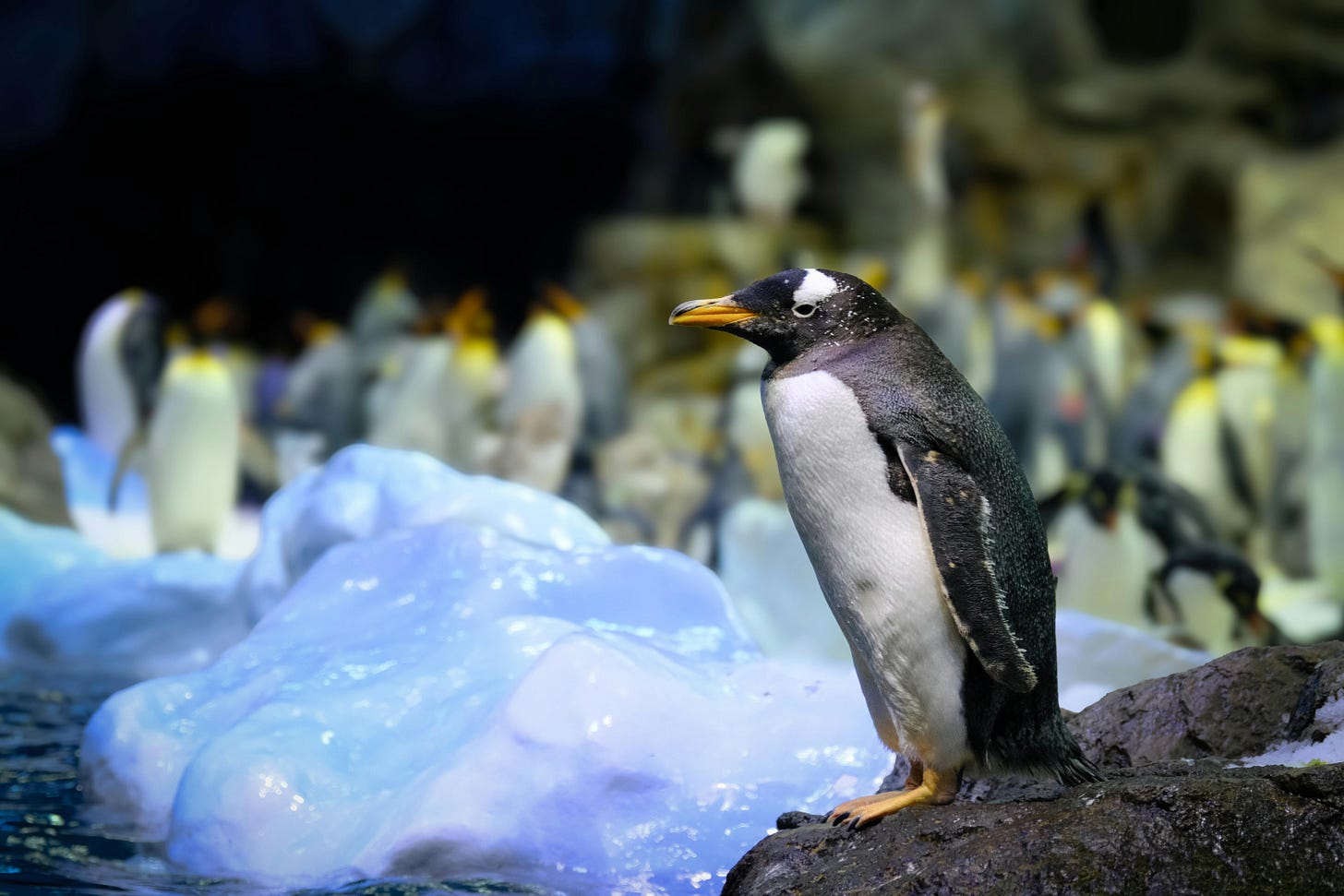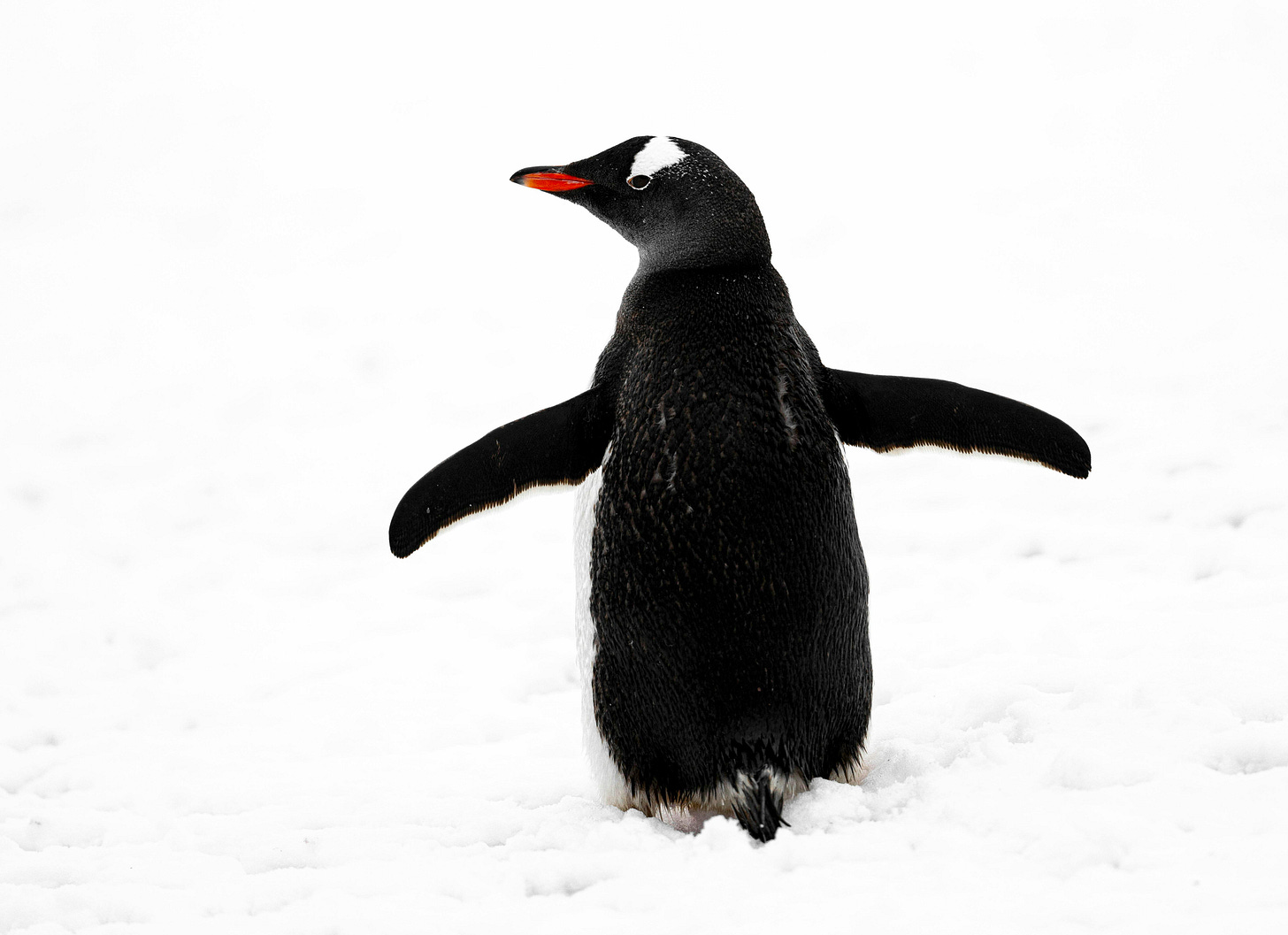Molting penguins overheat
Gentoo penguins overheat during their annual catastrophic molt because of a temporary double plumage.
Thanks for joining me again this week! After enjoying a wonderful Easter holiday in a nature reserve in Belgium, with a lot of birding, I’m back with another edition of Beaks & Bones.
This week, on April 25th, it’s World Penguin Day! Time to feature these adorable birds in the newsletter. Let’s get started!
Once a year, a Gentoo penguin does not eat anything for at least two weeks. During that period, after completion of the breeding season, it stays on land and looses up to 45% of its body weight. It is the time of their annual ‘catastrophic molt’.

'Catastrophic molt'—that sounds more dramatic than it is. It means that, instead of replacing their plumage gradually, the birds shed their feathers all at once. To maintain sufficient insulation throughout the process, they grow their new feathers before they start shedding the old ones. Therefore, penguins carry a double plumage for several days. This, in combination with an increased metabolic rate during molting, poses a serious challenge for the penguins. The birds overheat, scientists have found out1!
The researchers measured the surface temperature of molting Gentoo penguins (Pygoscelis papua) once per day in an aquarium in France with a thermal camera. High surface temperatures indicate high levels of heat loss, while low surface temperatures are a sign of strong insulation. They measured the surface temperatures of both feathered body parts (trunk and flippers) and non-insulated body parts (eye, bill, and feet).
The team of researchers found some interesting changes in surface temperatures over the days of molting. During the initial stages, when the penguins grow their new feathers but haven’t started shedding the old ones, surface temperatures of the trunk decreased significantly due to the added insulation. At the same time, the non-insulated regions of the body (eyes, bill, and feet) showed increased surface temperatures, indicating higher levels of heat dissipation—a sign of an increased body temperature.
These results indicate that penguins face some considerable challenges with regulating their body temperature during the molting period. As counterintuitive as it seems for a species inhabiting the Antarctic Peninsula, Molting Gentoo penguins overheat!
Penguins show different behavioral strategies to cope with this problem. For example, molting individuals tend to spend their time in shady burrows to avoid sun exposure, even if the ambient temperatures are low. But if you ask me, the most adorable behavior used for heat dissipation will always be their ‘give-me-a-hug’ posture!

Have a wonderful rest of the week! All the best,





That “give me a hug” posture is the absolute cutest! Wonderful post, Maja!
Some waterfowl lose the ability to fly during molting! Definitely a stressful time for birds all around.